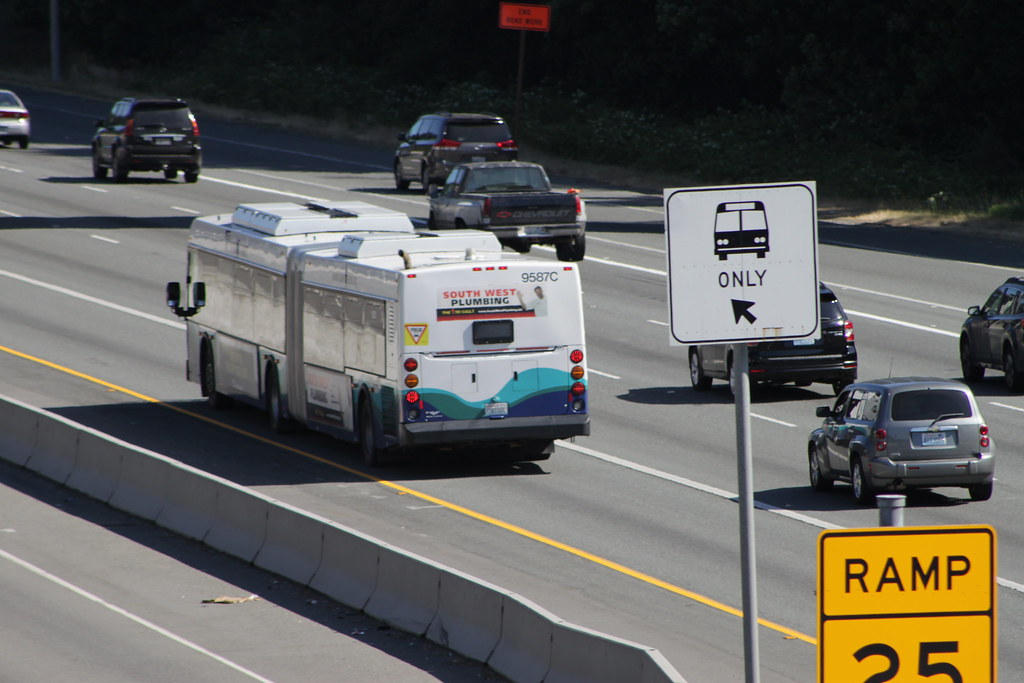Will pending federal transportation rule double down on outdated view of congestion?
USDOT is on the cusp of releasing crucial directions for how states and metro areas will have to measure traffic congestion. The new rule could push local communities to try in vain to build their way out of congestion, or mark a shift toward smarter approaches like shortening trip times, rewarding communities that provide more options or better accounting for other travel modes and telecommuting.
Updated: The rule is out — read our more detailed post on ten things you should know about it, and take action by sending a letter to USDOT.
Thanks to new requirements in the 2012 transportation law (MAP-21), USDOT is working to establish a new system of performance measures to help govern how federal dollars are spent and hold states and metro areas accountable for making progress on important goals. For two years, USDOT has been slowly developing, releasing and then refining new metrics for safety and state of good repair for highways and bridges. And any day now, they’re expected to release the final highway rule that will cover traffic congestion, air emissions, freight movement and system performance.
How we measure traffic congestion matters
While all of those specific metrics are important, how USDOT instructs states and metro areas to measure congestion will have huge impacts on communities of all sizes. Why? Because there’s a direct connection between how we decide to measure congestion and the resulting strategies for addressing it. And we need a measure that rewards solutions like aggressively investing in additional travel options, eliminating trips, reducing trip length, creating more places to live close to jobs or more effectively managing travel demand.
One of the most commonly used methods for measuring congestion today (and how proposed transportation projects would improve it or make it worse) is incredibly narrow and generates major criticism: roadway delay.
Every year, the Texas Transportation Institute releases their annual Travel Time Index congestion report that generates tons of news coverage across the country. Our piece from last year explained the limitations of comparing average rush-hour speeds to empty roads in the middle of the night, as TTI uses those middle-of-the-night speeds as their baselines for comparison. And then as a direct result of how congestion gets measured, many agencies attempt, at enormous price tags, to build enough road capacity to keep traffic moving at free-flow speeds during rush hour, usually bringing limited benefits (a few seconds of savings per commuter) at enormous costs.
Roadway delay, typified by TTI, also rewards places with long average commutes that happen at a high rate of speed, dinging places where people spend less time commuting or commuting shorter distances — just because they travel at slower speeds compared to that baseline of average travel speeds at the middle of the night.
Another major shortcoming is that roadway delay focuses only on drivers — not commuters as a whole, ignoring the millions of people opting out of congestion entirely by using various other options like transit, walking or biking or skipping the trip by telecommuting. Under a roadway delay measure, if a city has made investments like these that allow a large share of its commuters to skip roadway congestion entirely, it can be rated the same as another city where the average delay on the roads is the same, even if 100 percent of that second city’s commuters are stuck in traffic.
Delay is also blind to how many people a corridor is actually moving — it only looks at the number of vehicles. Should two similar corridors, where the first moves three times the amount of people as the second because of a carpool requirement or a lane dedicated to high-capacity transit, have the same scores for delay just because the travel speed is the same?
With USDOT about to propose this new framework for measuring congestion, it’s worth stating plainly: Roadway delay, similar to what TTI measures, represents a flawed and unrealistic view on measuring congestion.
It also doesn’t mesh with USDOT’s overall priorities, running counter to the stated goals of President Obama’s seven rounds of successful multimodal TIGER investments as well as the priorities of Secretary Foxx’s ambitious Ladders of Opportunity initiative.
A better, properly constructed measure will reward states and regions for investing in projects that make the most cost-effective difference in managing congestion, reducing travel times and improving system performance, regardless of what type of transportation mode is proposed.
What we’re expecting from USDOT
Unfortunately, early indications lead us to believe that the final congestion measure due to be released any day now will incorporate a variation on roadway delay. But that won’t be the end of the line for something better. Just like the past two rules that largely focused on safety and the conditions of roads and bridges, USDOT will be opening a comment period after the rule is released and then refining it one last time.
Though we’ll have an uphill battle, through coordination and agreement on a preferred alternative (more on that in our next post), we stand a strong shot at getting language included that acknowledges the limitation of these conventional congestion measures and invites development of a better, more holistic measure that provides a fuller picture of congestion and who is or isn’t affected.
But we won’t be able to do this alone. We will need cities, MPOs, transit agencies, the business community, state DOTs and advocates just like you to support our effort to ensure that the final congestion measure more fully accounts for all modes of transportation and doesn’t reinforce flawed 1950’s measures of success.






















Pingback: Today’s Headlines | Streetsblog California
Pingback: Smart Growth America welcomes Lynn Peterson as new senior transportation policy advisor | Smart Growth America
Pingback: Today’s Headlines | Streetsblog Ohio
Pingback: Tell the Feds: Don’t Turn City Streets Into Highways | Streetsblog.net